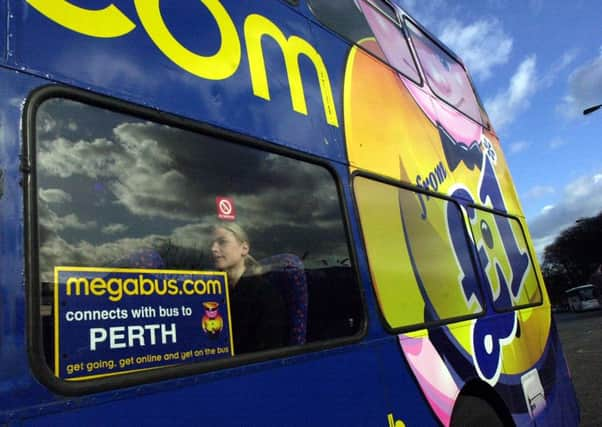Derek Halden: Buses missed in transport strategies


Most rail, ferry, and air services are planned nationally. This can give the impression that they are of greater national significance than bus services, but this would be a mistake. There are many more bus services and local planning recognises that it would probably not make sense to centralise the control over such an important and nationally significant asset. Yet the lack of any national control over buses can mean they are left out of the better-funded national transport programmes.
The role buses play as a foundation in the Scottish economy is often not fully appreciated. Buses are the main mode of travel to town and city centres, often being used more than car by commuters and shoppers. Bus travellers account for 29 per cent of retail spending in cities, and often more than 40 per cent in smaller towns. Scotland is also the home of two of the world’s biggest bus companies, First and Stagecoach, and Europe’s largest manufacturer of low carbon buses, Alexander Dennis.
Advertisement
Hide AdAdvertisement
Hide AdInvestment in bus services and infrastructure is often the best value way to grow the Scottish economy and to make better use of the available road capacity to move people around, but road, rail and air often attract the economic development headlines.
Buses don’t just connect economic hotspots like the areas around stations, they help to distribute wealth across the population so they can be a more inclusive approach to transport. Good transport is multi-modal so some of the leading transport authorities have been building partnerships that offer all people in society seamless journeys using several modes of travel. Rail network coverage has recently been extended to the Borders, but the bus network coverage extends well beyond Tweedbank and more generally across Scotland, and buses are used by many more passengers than the rail network.
But as the workhorses of Scottish transport, buses are not always loved. The industry has been trying hard to add some sparkle to the network with locally relevant branding and new services targeted at non-traditional bus users. Growth of travel on long distance coach services is outstripping the growth of most other transport.
The Scottish Government’s Bus Investment Fund and Green Bus Fund have also been supporting many new services, and marketing agencies such as VisitScotland recognise the potential to do much more to promote the bus.
However, in towns and cities bus journey times are too long as buses get held up in traffic congestion. A major programme of bus priority is needed across Scotland to ensure that bus journey times are at least as good as for cars. It is a popular misconception that adding bus lanes reduces car travel speeds. Indeed, the opposite is often the case. The purpose of the bus lanes is to let buses bypass the queues of cars waiting to get through junctions, but, if some of the car drivers see the bus going faster and choose to take the bus rather than drive, then fewer cars on the road mean faster car journey times too.
Perhaps the greatest advantage of bus travel is its resilience. When the car breaks down, or when the rail network is disrupted, or something unexpected happens we all rely on the bus replacement option. Some estimates of the value of the buses suggest that the presence of a bus network can be worth more socially to a community than the cash receipts through the farebox. The debate about the recent loss of some Citylink services between Perth and Edinburgh shows how even a small changes in patronage can make a big difference in network coverage. It is important to remember that the nationally significant bus services don’t just enable economic activity and social benefits but also run fully commercially in their own right, so more investment could deliver very high rates of return.
The gap between the function played by buses in society and how buses are perceived by some people and public agencies has been a key policy issue for Chartered Institute of Logistics and Transport (CILT) in Scotland and internationally. We have been working with the industry to help companies share good ideas about marketing and the CILT busmark scheme helps firms benchmark their performance, enabling continuing improvements.
On our office window we have models of buses that prove very popular when children of colleagues visit us. Yet this Christmas there will probably be more train sets and model cars given to children than buses. Rather than only prepare the next generation of Scots for a life of cars and trains why not give a bus this Christmas?
• Derek Halden, CILT Scotland